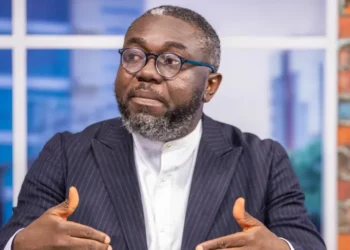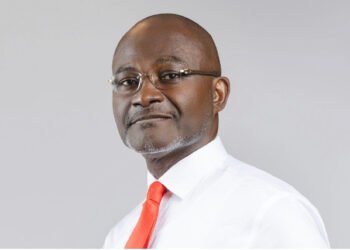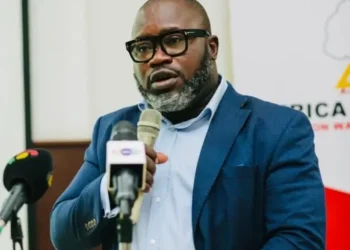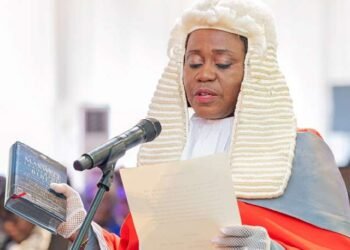The Majority Chief Whip, Hon. Rockson-Nelson Dafeamekpor, has maintained that former Chief Justice Gertrude Araba Esaaba Sackey Torkornoo has the right to challenge her removal in the courts, even as he firmly defended the basis of the decision.
Justice Torkornoo’s removal was announced by the Presidency after President John Dramani Mahama acted on the recommendation of a constitutional committee established under Article 146(6) of the 1992 Constitution.
The committee was established following three petitions filed against the Chief Justice. The Presidency’s statement confirmed that her removal took effect immediately, in line with Article 146(9), upon the Committee’s investigation into one of the three petitions – brought by Mr. Daniel Ofori.
Hon. Dafeamekpor pointed out that the constitutional framework allows the former Chief Justice to contest the findings of the committee in the Supreme Court if she chooses. “Nobody should think that this is the end. The findings of the committee can be challenged in the Supreme Court,” he added.

He further referred to the case of Charlotte Osei, the former Electoral Commission chairperson, whose removal under Article 46 was challenged at the Supreme Court. Though that case did not succeed, he argued it demonstrated that the legal avenue remained available for Torkornoo.
The Majority Chief Whip also dismissed claims that the grounds on which Justice Torkornoo was removed lacked merit. His response came amid criticisms from political figures including Gushegu MP Hon. Hassan Tampuli, who questioned the strength of the petition that triggered the process.
“It’s absolutely incorrect for Hassan Tampuli and some others to suggest that the grounds underpinning these petitions were whimsical and frivolous. There were no frivolities at all”
Hon. Rockson-Nelson Dafeamekpor, Majority Chief Whip
According to him, the committee’s work was serious, lawful, and consistent with the constitutional provisions that empower it to investigate allegations of misbehaviour or incapacity. He stressed that the removal was not arbitrary but rooted in due process.

Pending Petitions
Even as the removal took effect, questions arose regarding two additional petitions against Justice Torkornoo that had been adjourned at the request of the parties involved.
Government clarified that the responsibility for deciding the fate of those petitions rests solely with the Article 146 committee. Minister for Government Communications, Hon. Felix Kwakye Ofosu, stated that the Executive has no hand in that matter.
He noted that Justice Gabriel Pwamang, who chairs the committee, had already explained that the decision on whether to continue with the work of “looking into the two other petitions,” or drop them lies entirely with the committee.
Hon. Kwakye Ofosu stressed that the Executive’s role ended once the committee presented its findings and recommendation for removal from the first petition, which the President duly acted upon.
President John Dramani Mahama’s action to remove the Chief Justice marked a significant use of his constitutional mandate. By accepting the recommendation of the Article 146 committee, the President followed the same process applied in past cases involving high-ranking judicial and constitutional officers.

Dafeamekpor underscored that this precedent reaffirms the balance between “constitutional checks and executive action.” He reiterated that Justice Torkornoo retains her right to appeal, but also emphasized that the Presidency was within its authority to implement the committee’s recommendation.
As the process concludes for the moment, public attention remains fixed on whether the former Chief Justice will exercise her right to contest the committee’s findings in the Supreme Court and how the committee will dispose of the remaining petitions.
READ ALSO: Dangote Refinery Sources Ghanaian Crude as Operations Scale Up























